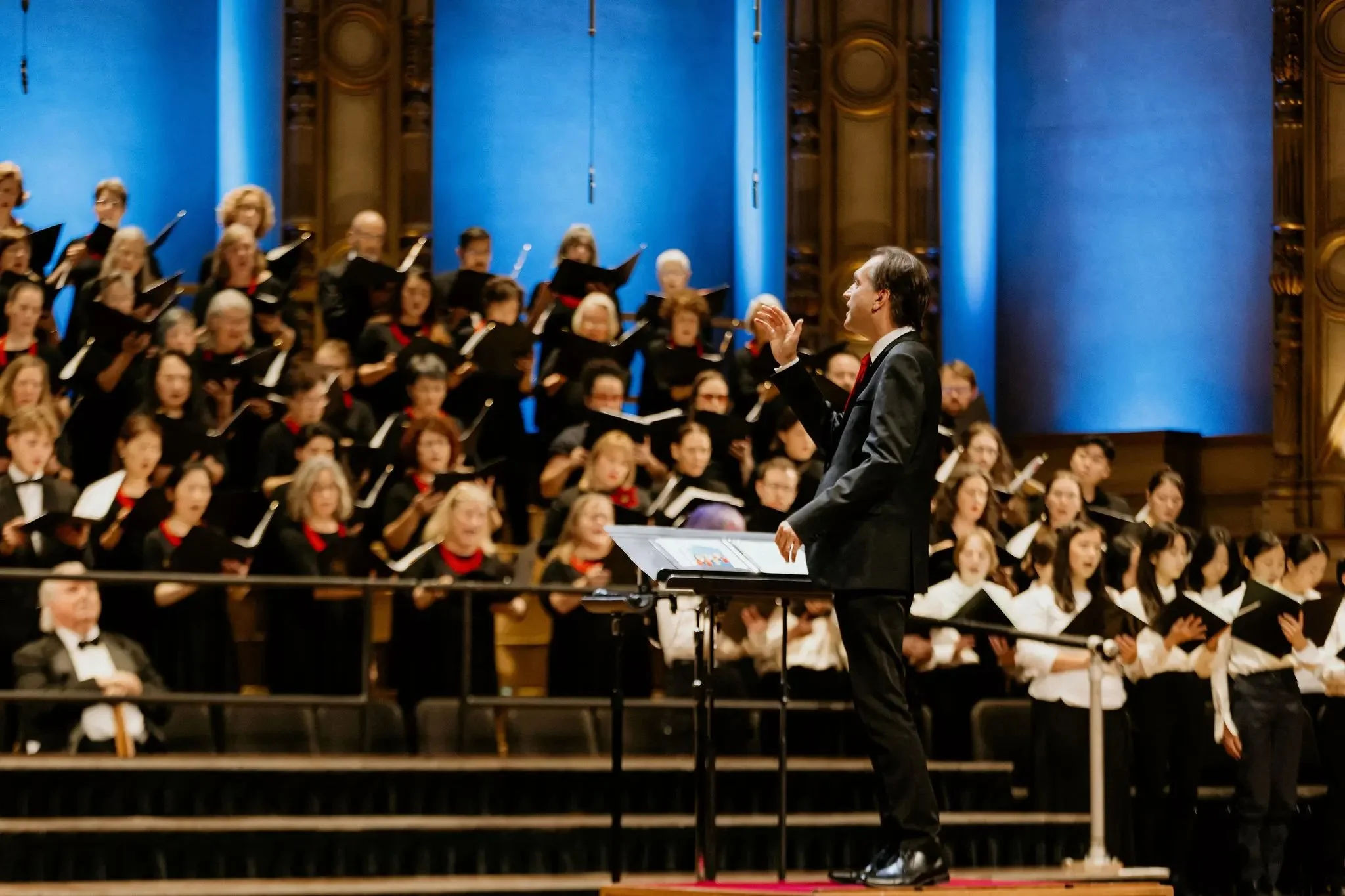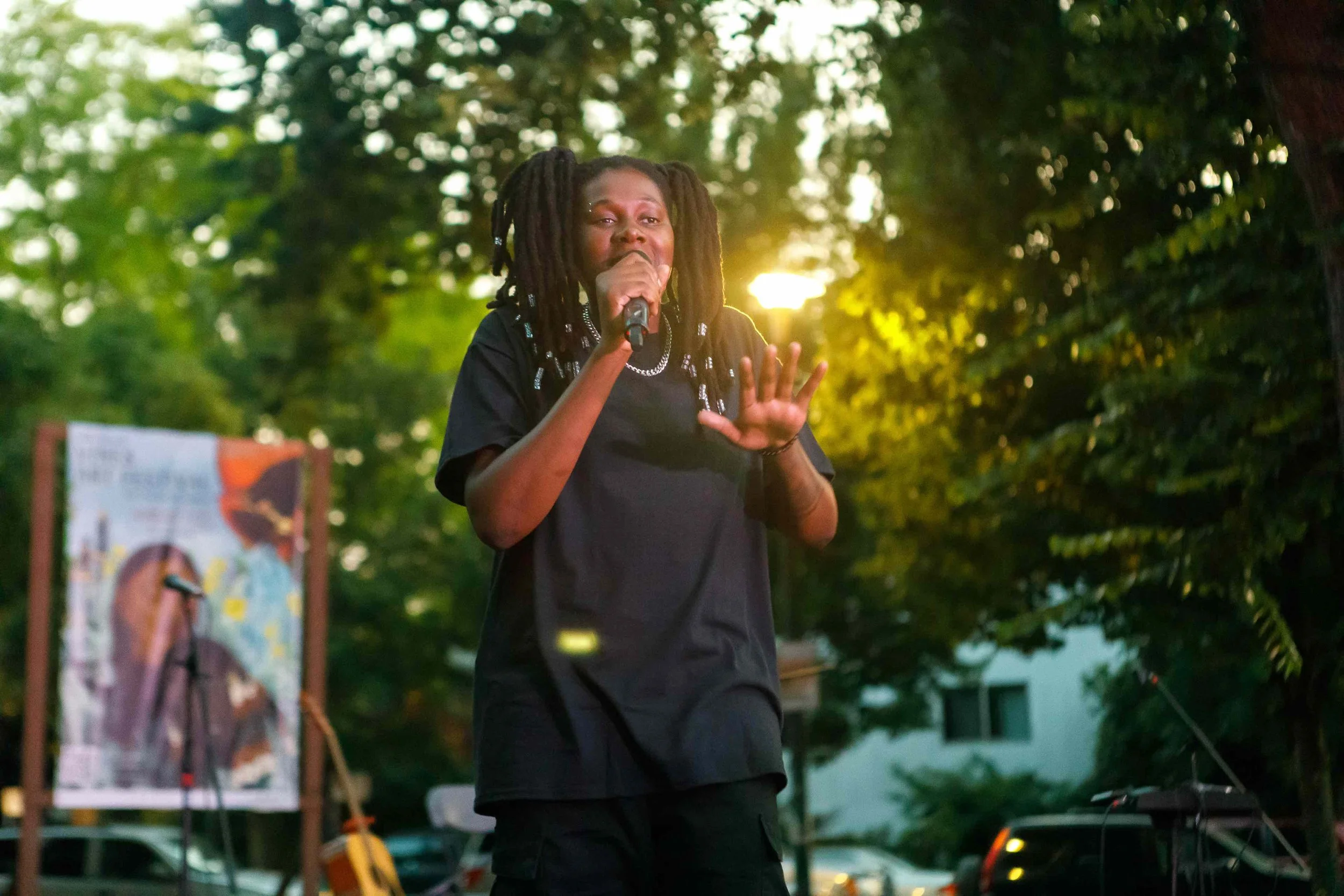Wayne Horvitz plays ringmaster to new Electric Circus project’s celebratory sonic adventure
Vancouver International Jazz Festival’s closing act layers, stacks, and twists pre-existing songs in its own brilliant form of live sampling and improvisation
Wayne Horvitz’s Electric Circus at the Royal Room in Seattle in May. Photo by Joe Mabel
The Vancouver International Jazz Festival presents Wayne Horvitz’s Electric Circus at Performance Works on June 30 at 7:30 pm
THE POPULAR CONCEPTION of improvised music is that it’s serious business, and for good reason. To play jazz or any of its more outré offshoots on a professional level requires great technical ability, immense powers of concentration, and the willingness to shed whatever inhibitions you might carry with you onto the stage—three attributes that rarely align. But what if you want to move your fearless dedication into the party zone?
Well, then, you might want to call Wayne Horvitz—and that’s exactly what Vancouver International Jazz Festival programmer Cole Schmidt did when booking acts for the festival’s final day. It’s a natural choice, in many ways: the New York City–raised, Seattle-based keyboardist has a track record of working with all kinds of uncompromising innovators, including John Zorn, Bill Frisell, William S. Burroughs, and his wife, composer and songwriter Robin Holcomb, who has a jazz-fest show of her own at the Red Gate Revue Stage on June 29. But his own long-running band Zony Mash took its name from a 1970 funk rarity by New Orleans legends The Meters, and he’s not shy of expressing his love of Americana innovators such as Little Feat and the Grateful Dead.
Better still, Horvitz is just beginning to tour a relatively new project, Electric Circus, that looks tailor-made to deliver a celebratory finale for the festival while also upholding its reputation for sonic adventure. It is, admittedly, an undertaking that he kind of backed into; as the keyboardist tells Stir in a Zoom interview from his home, it came about as a way to inspire some young music students who seemed stuck in jazz orthodoxy.
“I was trying to get them to improvise in a different way, by saying ‘Do a loop’ or ‘Do long tones,’” he explains. “They weren’t really having it. So then I handed them some charts of mine, and I took little motifs and put numbers on them and was saying ‘Okay, you play number one while you play number two.’ That led me to thinking that it was sounding pretty cool, so I started an adult group that did the same thing.” That group established an ongoing residency at Seattle’s The Royal Room nightclub, and grew into Electric Circus.
The thing about this group, though, is that in its touring form only Horvitz is a constant, and wherever he goes he prefers to work with local performers. At the Performance Works show on June 30, for instance, he’ll work with a blend of Vancouver veterans and rising stars, along with jazz festival artists-in-residence Shahzad Ismaily and Sakina Abdou. (Also in the band will be Nikko Whitworth on acoustic bass, Meredith Bates on violin and viola, drummer Kai Basanta, guitarists Jeff Younger and Madeleine Elkins, keyboardist Chris Gestrin, JP Carter on trumpet, Nebyu Yohannes on trombone, saxophonists Gordy Li and Chris Kelly, percussionist Jack Duncan, and vocalist Shruti Ramani.)
“I had strong input about what the instrumentation would be,” Horvitz says, while allowing that Schmidt helped assemble Electric Circus’s cast. “It’s always two basses; it’s always two guitars; it’s always drums and percussion. It’s always some brass and woodwinds; I need a horn section of four or five people. I like to have a violinist, and a vocalist. I usually have one keyboard, but sometimes two—and sometimes the one-keyboard thing is just about the amount of space on the stage. So the instrumentation definitely came from me, but when Cole said that Shahzad was going to be a guest I said ‘That’s awesome. He’s a great bass player.’ And [saxophonist] Sakina Abdou I’ve never met—but it’s always great to meet new people.”
This openness fits with the somewhat unpredictable nature of the Circus, but as its ringmaster, Horvitz has developed some strategies to keep the lions—young and old—under control. His familiarity with “conduction”, a method of spontaneously organizing large-group improvisation, dates back to his mid-’90s work with the late trumpeter Butch Morris, a beloved figure in New York’s downtown avant-garde scene known for using a combination of hand signals, numerical cues, and written material to structure live performances on the fly. Morris’s techniques weren’t entirely new, however.
“I started to develop a vocabulary of signs and gestures to indicate certain things that don’t exist in traditional conducting, and that don’t exist in improvising,” he told a Bay Area workshop in 2007, tracing this approach’s roots back to the 1500s while noting that artists as diverse as Leonard Bernstein and Frank Zappa had used similar strategies during the 1960s and ’70s. Horvitz’s twist is to treat conduction as a form of live sampling, extracting brief passages from pre-existing work and then layering, stacking, and twisting them to create unique and unpredicatable instant compositions.
“I might take 10 motifs from a Thelonious Monk tune and make them into two-measure phrases,” Horvitz says. “I might tell two of the saxophone players to play motif number two while other musicians are playing motif number five. I also might do things like take that motif and transpose it… I might take a motif and then tell them to open it up and then bring it together again.
“But for this I won’t do that,” he continues. “I’ll have 10 motifs from 10 different tunes. So I have a James Brown tune, a Los Lobos tune, a Sly and the Family Stone tune, a tune from Devo… And they’re all just two- or four-bar riffs, and the whole score is just those 10 motifs. So there’s a lot of totally improvised music, but also a lot of playing off those grooves.
“Now, to be clear, with those 10 motifs the bass player might have something that’s not the same as the horn player,” he adds. “The bass player has the bass line and the horn player has the horn part. But it’s only that two-bar phrase, so you still end up having three songs going on at the same time.”
Half the fun of an Electric Circus gig, then, is trying to figure out why any given phrase sounds familiar, and where you’ve heard it before—and the other half is just giving yourself over to the wild permutations that inevitably arise.
“I often want people to be playing something very specific,” Horvitz says, laughing. “And then just leave it to me to get the weirdness going!” ![]()














